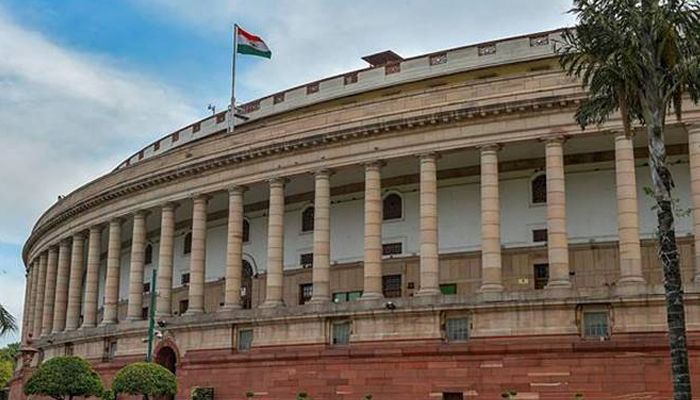TRENDING TAGS :
All you need to know about No Confidence Motion and its history
Lucknow: Neither a confidence motion nor a no confidence motion is mentioned in Indian Constitution. But Article 75 spells it out that 'the council of ministers shall be collectively responsible to the House of the People'.
This implies that the majority of Lok Sabha members must support the Prime Minister and his cabinet.
If in case, it seems like the appointed government isn't working efficiently and failing to carry out its obligations, the opposition can ask to move a no-confidence motion in the Lok Sabha where it will be debated and voted.
- The motion can only be introduced in Lok Sabha (lower house of the Parliament) with support of minimum 50 house members.
- It will be then debated and members vote in or against the favour of the motion. If majority of members vote in favour of the motion, it is passed and the ruling party will have to vacate the office.
Also Read: #NoConfidenceMotion: PM Modi slams RaGa for insulting Jawans
The first ever no confidence motion was moved in August 1963, by Acharya Kripalani against Jawaharlal Nehru, immediately after the Indo-China war.
Indira Gandhi-led Congress government had faced highest numbers of no confidence motions - 15 times, followed by Lal Bahadur Shastri and Narasimha Rao (thrice each), Morarji Desai (twice), Jawaharlal Nehru, Rajiv Gandhi, Atal Bihari Vajpayee and Narendra Modi (once each).
Till July 18, 2018, a total of 27 no confidence motions have been moved, out of which 25 were unsuccessful and one did not get to the voting stage as Morarji Desai resigned as Prime Minister on July 12, 1979.
On Friday, after 15 years, a no-confidence motion was moved in lok Sabha against BJP government by Telugu Desam Party (TDP), Congress and the Nationalist Congress Party (NCP), and a few other Opposition members; and was passed by Lok Sabha Speaker Sumitra Mahajan on July 18, 2018.
Appealing the Opposition to respect people's mandate, Union Home Minister Rajnath SIngh said, "After 15 years, a No Confidence Motion has been moved against a government. We never moved a no-confidence motion in 10 years when Congress was in power because we understood that the Congress had people's mandate."
The motion moved ahead of 2019 general elections hints on the Opposition's strategy to drag the ruling government in Lok Sabha for a floor test. And to cash in an opportunity to debate on the alleged failed and fake promises made by BJP before coming to power.
Also Read: No confidence motion against Modi-led BJP government dismissed
Rahul Gandhi took a dig on various policies of government among which Rafale and surgical strike were the key highlights.
BJP's ally Shiv Sena and AIADMK walked out of the Parliament, as they decided not to vote. The bickering between Sena and BJP is not new. What upset Thackeray were media stories of BJP chief Amit Shah’s phone call to him for seeking support in floor test. Though, party insiders denied any such incident.
As BJP had a strong base in the house, the united oppositions' no-confidence was defeated. BJP won with 325 Members of Parliament voted in favour of the government, while 126 voted against it.
The BJP has shown its strong presence in Lok Sabha and has proved that Congress will have to work a lot to regain power at the Centre.



